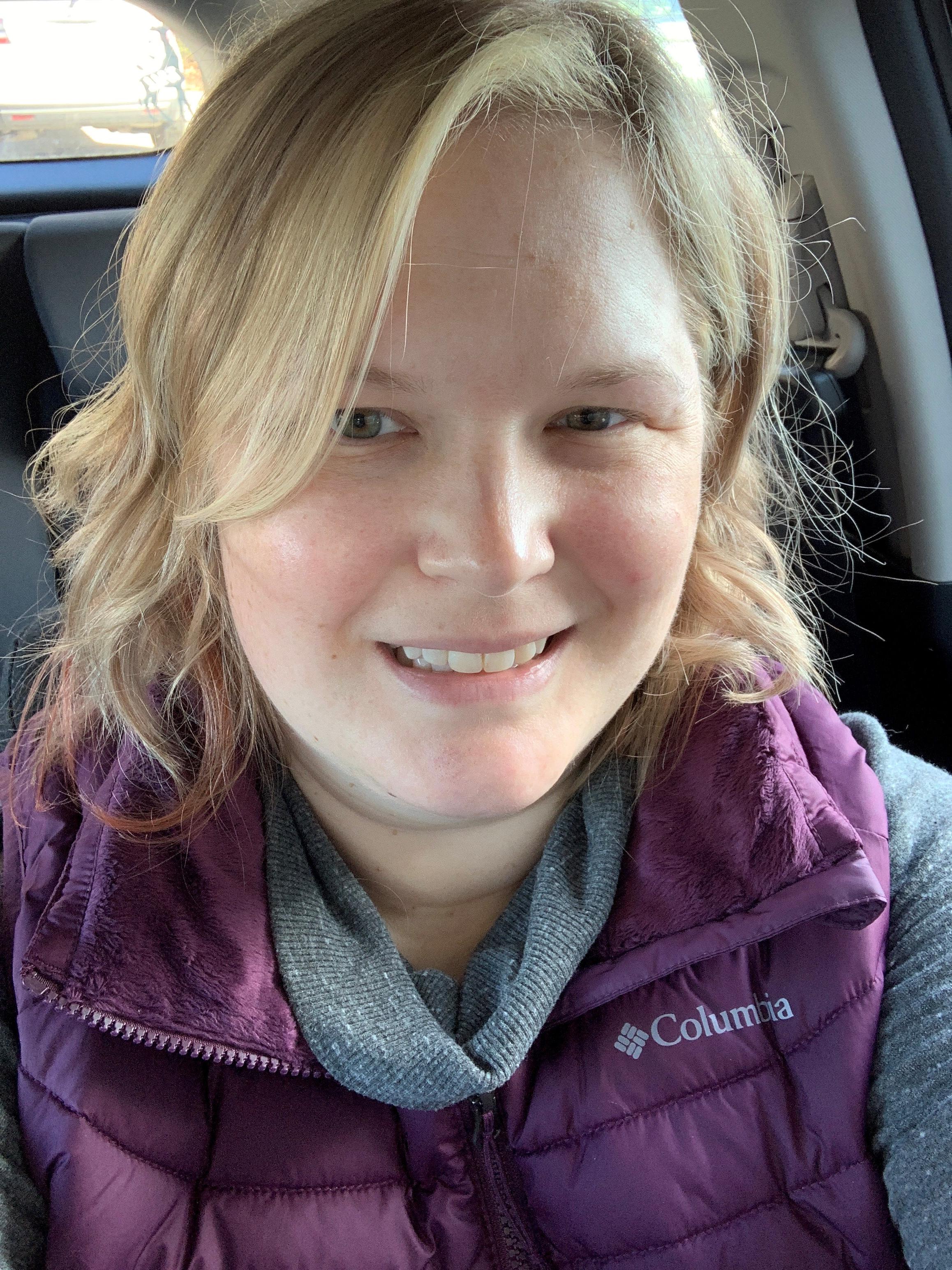Setting Up Too Many Constituency Codes?
What is the worst that can happen with starting at 20 - then it can only grow!
I teach my clients to add many detailed codes to Attributes - Have you had success with that?
What are your Constituency Codes Best Practices?
See codes I think should move to Attributes below.
Thanks,
Maria
| Press |
| Academic |
| Cultural Contacts |
| Library |
| Clergy |
Comments
-
Constiuent codes are too important to have so many. We use them to delineate our 10 foundations. Within each foundation, we tend to keep the number to a minimum and focus on attributes. And don't forget that the top constituent code on the record is the preferred one.
0 -
Do all these codes describe how the constituent relatest to the organization, or are they descriptions of the constituent separate from their relationship? The five you've listed could go either way.
Also, will they be using constituent codes in any reporting? Do the 20 they have in the mind fit into similar buckets, or do they describe different things? I would use those two questions to help me deide.
For example, we use Constituent Codes to help us identify the relationship the person has to the university for gift purposes and the annual VSE. Someone can be an Alumni and a Parent, but those include and override Individual. There's a hierarchy, too.
We used to have Board Member, Museum Friend, and another Membership Friend in the constituent codes, but moved them to an attribute or membership setting because they relate to what the consituent does rather than who they are, and every one of those had to have another constituent code for gift reporting. (Museum Friends can be organizations or individuals, so "Museum Friend" wasn't enough on its own, and it was at the bottom of the hierarchy.)
0 -
We went form 70(?!?!) to 10 and have added a few since then.
We use Constit Code for high level coding and then relationships for more specific tracking. We view it as "what differentiates them from a basic individual - what makes their relationship to our organization that step closer than someone unaffiliated to us. So, someone is an individual if they've made a gift or attend an event. But, once they move closer to us - by becoming a patient, a housing member, a family member of a patient or housing member, etc ...then they are assigned that Consituent Code (or Codes). And we have a hierarchy for these codes, so that if someone has more than one the highest level pulls in reporting as such.
Our Constit Codes are:
Volunteer Leader (Board member or Trustee)
Housing Member
Patient
Family Member (of patient or housing member)
Legacy Society Member (Planned Giving Society)
Spouse of Volunteer Leader
Staff
Individual (default)
Organization (Non-profit org)
Corporation (For Profit Org)
Foundation
Givernment Grant
Board/Committee (The records for our BOD and Trustee Committees to which we link Volunteer Leaders)
Naming Opportunity (How we track Naming Opps, linking over to donor as appropriate)
... and then we have some "former" versions of a couple of these - Former Volunteer Leader and Spouse of Former Volunteer Leader. We used to have "former" for most of them (thus doubling our Constit Codes), but did away with most of them.
Records with a Consit Code of Volunteer Leader have relationships to Board/Committee Records for the specific of which they are a member, Previously, we had separate codes for BOD, Trustee, Chairman's Cabinet, Trustee for Life, and Chair for Life. Now there's the single "Volunteer Leader" with a relationship link over to those other Board types.
Patient, Family Member, and Housing Member have relationships to Org records for our various entities.
For Staff, we use attributes (not sure why that rather than relationships, but there you go :-)
Hope this helps!0 -
One of the things I consider when adding Constiuent Codes is what information I want the Development department to see easily. While I could put membership levels (major donor, Board, planned giving, etc.) in the Attributes section, I tend to use them as a Constituent Code because then my managers can see what groups the constituent belongs to when they open the record on Bio 1 without having to look at other tabs - basically, I make it as easy as possible for them to find the info without doing much work
 1
1 -
Sheila Lutz:
One of the things I consider when adding Constiuent Codes is what information I want the Development department to see easily. While I could put membership levels (major donor, Board, planned giving, etc.) in the Attributes section, I tend to use them as a Constituent Code because then my managers can see what groups the constituent belongs to when they open the record on Bio 1 without having to look at other tabs - basically, I make it as easy as possible for them to find the info without doing much work Just an FYI: you can change what appears in the bottom of Bio 1 in the User Options between Memberships and Constituent Codes. I have mine set to Memberships from back when I was the membership manager, because I needed to know that membership data more than I needed to know the constituency, and I set it that way for anyone who works a lot with any of our membership programs (which includes all of our boards & councils and it's how we track elected officials for our region).
Just an FYI: you can change what appears in the bottom of Bio 1 in the User Options between Memberships and Constituent Codes. I have mine set to Memberships from back when I was the membership manager, because I needed to know that membership data more than I needed to know the constituency, and I set it that way for anyone who works a lot with any of our membership programs (which includes all of our boards & councils and it's how we track elected officials for our region).
Of course, that doesn't really work for Sheila's memberships (those are more like prospect classifications, I think?), but if anyone else is wondering, it's an option!
0 -
Maria Petulla:
My client is at the beginning of setting up Raiser's Edge. They want to add 20 Constituency Codes.
What is the worst that can happen with starting at 20 - then it can only grow!
I teach my clients to add many detailed codes to Attributes - Have you had success with that?
What are your Constituency Codes Best Practices?
See codes I think should move to Attributes below.
Thanks,
MariaPress Academic Cultural Contacts Library Clergy Only 20? We have 10 for organizations and another 38 for individuals. We are currently working on creating definitions for each one of these codes so that other staff understand when they should be used.
0 -
Constituent Codes are by design, supposed to describe the affiliation a record (individual or org) has to YOUR organization. It should be the main way they are related to your org. If there is a subcategory/description/group, then that can and should be an Attribute. The Consitituent Codes feed into other parts of RE and affect reports and how you can and cannot pull info. Your Constit Codes should have a hiearchy that is mutually agreed upon within your department/org. That is then used as part of the backbone when reporting, appealing, grouping folks.Maria Petulla:
My client is at the beginning of setting up Raiser's Edge. They want to add 20 Constituency Codes.
What is the worst that can happen with starting at 20 - then it can only grow!
I teach my clients to add many detailed codes to Attributes - Have you had success with that?
What are your Constituency Codes Best Practices?
See codes I think should move to Attributes below.
Thanks,
MariaPress Academic Cultural Contacts Library Clergy
If you really look at what the descriptors are for your relationships with the greater community and your specific community -- you will come up with a key number of Constit Codes that could be five or it could be 20, but that should not change over time. When you refer to adding more and adding more... those are probably things that are better as one of the subgroup Attributes or should live elsewhere in RE that is obvious and accessible.1 -
Christine Cooke:
Constituent Codes are by design, supposed to describe the affiliation a record (individual or org) has to YOUR organization. It should be the main way they are related to your org. If there is a subcategory/description/group, then that can and should be an Attribute. The Consitituent Codes feed into other parts of RE and affect reports and how you can and cannot pull info. Your Constit Codes should have a hiearchy that is mutually agreed upon within your department/org. That is then used as part of the backbone when reporting, appealing, grouping folks.Maria Petulla:
My client is at the beginning of setting up Raiser's Edge. They want to add 20 Constituency Codes.
What is the worst that can happen with starting at 20 - then it can only grow!
I teach my clients to add many detailed codes to Attributes - Have you had success with that?
What are your Constituency Codes Best Practices?
See codes I think should move to Attributes below.
Thanks,
MariaPress Academic Cultural Contacts Library Clergy
If you really look at what the descriptors are for your relationships with the greater community and your specific community -- you will come up with a key number of Constit Codes that could be five or it could be 20, but that should not change over time. When you refer to adding more and adding more... those are probably things that are better as one of the subgroup Attributes or should live elsewhere in RE that is obvious and accessible.I've always been of the mindset of keeping your constituent codes broad, and your attributes more specific. Many of my attributes are being used to more fine-tune my constituent codes. This is something I'm struggling with in my organization, as it has gone through a lot of changes in the organizational structure. I'm trying to devise a plan to get my constituent code table to a meaningful lean number around 20.
0 -
We used to have over well over 50 CC. We know have about 15. We use the CC to determine why this record is in RE. Atributes are used to break it down further if more explanation is needed.0
-
I just completed a project of cleaning up constituent codes. There were over 130 codes!! There were duplicates, typos, and all sorts of things that maybe made sense to past DBA's, but we had no clue what they meant. We sorted through each code type, and ended up with 30 as of now. We created a process and code guide with a defintion of each code, who is responsible for managing the code, etc. We've also been measuring the success of our mailed appeals since the cleanup because we pull from constituent codes for the mail lists.
Great feed...definately following this!!1 -
Beth Gibney:
I just completed a project of cleaning up constituent codes. There were over 130 codes!! There were duplicates, typos, and all sorts of things that maybe made sense to past DBA's, but we had no clue what they meant. We sorted through each code type, and ended up with 30 as of now. We created a process and code guide with a defintion of each code, who is responsible for managing the code, etc. We've also been measuring the success of our mailed appeals since the cleanup because we pull from constituent codes for the mail lists.
Great feed...definately following this!!Hi Beth - great post! Would you be willing ot provide some insight into the codes you use now? I am getting ready to start the same project. I keep trying to tell my team I can't report on things until well after it's cleaned up. We have some like "Misc. Community Organization Donor" that are terrible and will be gotten rid of. Ones that I've set up so far are Donor, Board Member (no former - that's what the dates are for), Volunteer, and Staff. We're a hospice organization so there will be quite a number more, but just trying to get an idea of what everyone else is using before I build my framework.
0 -
Amanda, I agree on use of dates vs. former. Has worked fine for us.
Several others we have found valuable are- Donor Advised Fund - depending on your info/reports needs, you may not need
- Donor - Memorial/Honorarium - this allows us to filter out/in those who've given to us specifically for someones memorial vs giving to an appeal/campaign to fund our org. I know some would say these should be asked for any appeal but not what we want.
- Prospective donor - when we are preparing for campaigns, especially capital, we are often adding lists from local organizations and solicitors. We use this code until they donate, then changed to donor (change is tracked and made using gift code in batch). This provides me data when cleaning up to see when/who (attribute detail) added so we can delete these records as desired.
0 -
Beth Gibney:
I just completed a project of cleaning up constituent codes. There were over 130 codes!! There were duplicates, typos, and all sorts of things that maybe made sense to past DBA's, but we had no clue what they meant. We sorted through each code type, and ended up with 30 as of now. We created a process and code guide with a defintion of each code, who is responsible for managing the code, etc. We've also been measuring the success of our mailed appeals since the cleanup because we pull from constituent codes for the mail lists.
Great feed...definately following this!!
Great answer! I'm in the process of doing this at my very small organization--we have over 160 Const. Codes and I want us to get down to a handful. My question is What's the best process for weeding out these codes in the database? I'm looking at globally replacing some that clearly overlap, globally deleting irrelevant ones from records, and renaming good codes with a consistent naming syntax. Any suggestions? Warnings?
Great thread!0 -
Good Luck! During our cleanup process, I originally exported all codes including the inactive. I brought the entire list to those who would be impacted to ask the history of the code, the owner of the code, why would they use it, etc. Some codes required additional research, so I would go back, pull a query of constituents with some gift info so that we could review and make a best decision on how those folks should be coded. Some of the codes were quick answers, for example we found 6 different codes that all meant that the constituent was a prospect - that was easy and I could just global change. Another code we found that a previous DBA did an import of over 2000 records and did not check for dups! Unfortunately with scenarios like that, there is a lot of manual work. Its a lot of work, but its been exciting to see return on annual mailed appeals from donors who have not been touched because they didn't have the right codes on them so they were not meeting the right criteria to be mailed too! Good luck!0
-
Pam,
While you could replace using global. I would consider using table clean up. Configuration > Tables > Constituent Codes choose table clean up. It lets you choose Code A to be replaced with Code B. Check the box to delete table entries being replaced.
What I like is that all the codes are listed right in front of you. You don't have to run numerous queries and run global change.
My experience has been that it's quick. Just a suggestion.2 -
I just completed a project of cleaning up constituent codes. There were over 130 codes!!HI All, I am just about to tackle reducing 183 constituent codes to 10 (or less) any one want to give me the benefit of their experience as to the the best HOW. Table cleanup, global processes, import?? which would you suggest to go with first and why?
thanks
1 -
I work in higher ed and our constituency codes are limited to the constituent's relationship with our university.
For IND records: Alumni, Alumni - Non-Degree, Parent, Tribute Donor (that is for those making a one-time IHO or IMO gift, but if they make another gift their constituent code will be changed to Friend), Friend. We do have a Discovery Prospect constituency code for those that we're looking at for cultivation, but we don't want them to pull in any communications at this time.
For ORG records: Corporation, Organization, Matching Gift Company.
We also track members of our university boards, but only the higher level boards (i.e, Foundation, each school advisory board). For program boards we track those in Volunteer module.
I hope you find this somewhat useful! :-)
Donna
2 -
I'd also say it's important (or I think it is) to use from and to dates. That way you can have the dates someone was a board member for example instead of creating a former board constituent code. And you're also able to figure out who was on your board in a particular year. This is probably something that can be done as a relationship but something like board is important enough, and defines their relationship to the organization, that it is a constituent code.
One thing I have heard about constituent codes with from and to dates is that if someone's primary constituent code (the first one) has a to date then it isn't considered primary in NXT. Not sure if this is accurate or not, I haven't really examined it to determine if that is true. But there is analysis that is done based upon constituent codes (for example giving to a fund based upon a constituent's code).1 -
Thanks for the feedback. I actually would like suggestions from those that have cleaned up all three ways, table clean up, global processes and import, toblet me know which was the most efficient? Is there a fourth way I am unaware of? I am leaning to global processes, to move some of the existing codes to attributes, to retain the information, eg member of band. As I have not done s cleanup on this scale looking for advice from those that have.
thanks1 -
I used Current Board Members and the from and to dates and Past board members and I put their term dates in as well. This is something we use in Development here at the museum
Stephanie1 -
Good morning, Donna. I work at a regional, comprehensive university. About 2 years ago, we embarked on a project to reduce our plethora of constituency codes down to the 8 basic ones reported in the VSE plus one for students. It was a year and half long process that involved a Blackbaud consultant (well worth the money), and convening a committee of primary RE users and administrators. All the other information/coding from the constituency codes phased out was moved to the appropriate place within RE (i.e., tabs, check boxes, fields, relationships, etc.). If you would like to discuss the project details and outcomes, please give me a call at 678-839-4161. Thanks.1
-
Kim Riener:
I just completed a project of cleaning up constituent codes. There were over 130 codes!!HI All, I am just about to tackle reducing 183 constituent codes to 10 (or less) any one want to give me the benefit of their experience as to the the best HOW. Table cleanup, global processes, import?? which would you suggest to go with first and why?
thanksI would first work to create the hierarchy of codes. Then I'd create a pivot table from the code list. I'd look at the ones that have the smallest number of constituents and see if you can remove them manually. Table cleanup can potentially create duplicates (I guess all of the processes can potentially create duplicates though). I think that is the biggest thing you need to figure out is how to deal with the possible aftermath of duplicate constituent codes.
I'm going to need to finish this project myself one day.
1 -
Thanks for all the comments. I have already done my count of codes, only 4 had no records attached, 12 with less than 5, the rest all over the shop. I am going to start moving the needed information to attributes through query and global processes, then I will decide if I table cleanup or import is the way to go. Love the fact that you all share you experience. Thanks1
-
I like to think of Constituent Codes as a "noun" that defines the record (and I'm of the school of one and one only Cons Code). Then I use Attributes as "adjectives" - - things that tell me more about the constituent. And just like the universe of adjectives, they can be many, varied, modify each other - - just have the Attribute Descriptions be "table entries" not Text fields!2
-
Kim Riener:
Thanks for all the comments. I have already done my count of codes, only 4 had no records attached, 12 with less than 5, the rest all over the shop. I am going to start moving the needed information to attributes through query and global processes, then I will decide if I table cleanup or import is the way to go. Love the fact that you all share you experience. ThanksHow did you run the number of records for each constituent code? I can't figure it out.
0 -
Sandra BradfordJennings MHA the easiest method I can think of is a Query export into a pivot table. Make your output Constituent ID and Constituency (be sure that it's not Primary Constituency), then create the pivot table using Cons ID for rows and Constituency (Count) for Value. I don't think you'd need to do anything in the criteria, since without limiting criteria, query includes all appropriate record types.1
-
Sandra BradfordJennings MHA and Keri Barnhart try Tallies under Reports > Demographic and Statistical Reports in RE database view.2
-
One of the important things to keep in mind with constituent codes (and it has been mentioned here briefly) is reporting. Specifically in NXT the pre-built dashboards include charts that look at giving by constituent code but they only take into account the primary constituent code. Although we have insight builder I haven't had enough time to see if you can use any other than the primary.
I'm of the mindset that it's the individual's relationship to the organization (board member, donor, media, staff, etc.). Organizations are slightly different because they're more of a description of the organization (foundation, donor advised fund, nonprofit, etc.) not their relationship to us (which I hadn't thought of how we're using them differently until writing this now). I would also strongly suggest using the dates and not changing anything to "former"/"previous". Other organizations I've worked at people have asked to see reports such as how board giving this year compares to past years and that only works if I know who was on the board in past years. So former or previous doesn't help as much as having the dates someone was on the board.2 -
I agree with you on using Attributes rather than Constituent Codes. We use Constituent Codes for very general categories. More detailed categories are in Attributes.1
Categories
- All Categories
- Shannon parent
- shannon 2
- shannon 1
- 21 Advocacy DC Users Group
- 14 BBCRM PAG Discussions
- 89 High Education Program Advisory Group (HE PAG)
- 28 Luminate CRM DC Users Group
- 8 DC Luminate CRM Users Group
- Luminate PAG
- 5.9K Blackbaud Altru®
- 58 Blackbaud Award Management™ and Blackbaud Stewardship Management™
- 409 bbcon®
- 2.1K Blackbaud CRM™ and Blackbaud Internet Solutions™
- donorCentrics®
- 1.1K Blackbaud eTapestry®
- 2.8K Blackbaud Financial Edge NXT®
- 1.1K Blackbaud Grantmaking™
- 527 Education Management Solutions for Higher Education
- 1 JustGiving® from Blackbaud®
- 4.6K Education Management Solutions for K-12 Schools
- Blackbaud Luminate Online & Blackbaud TeamRaiser
- 16.4K Blackbaud Raiser's Edge NXT®
- 4.1K SKY Developer
- 547 ResearchPoint™
- 151 Blackbaud Tuition Management™
- 1 YourCause® from Blackbaud®
- 61 everydayhero
- 3 Campaign Ideas
- 58 General Discussion
- 115 Blackbaud ID
- 87 K-12 Blackbaud ID
- 6 Admin Console
- 949 Organizational Best Practices
- 353 The Tap (Just for Fun)
- 235 Blackbaud Community Feedback Forum
- 124 Ninja Secret Society
- 32 Blackbaud Raiser's Edge NXT® Receipting EAP
- 55 Admissions Event Management EAP
- 18 MobilePay Terminal + BBID Canada EAP
- 36 EAP for New Email Campaigns Experience in Blackbaud Luminate Online®
- 109 EAP for 360 Student Profile in Blackbaud Student Information System
- 41 EAP for Assessment Builder in Blackbaud Learning Management System™
- 9 Technical Preview for SKY API for Blackbaud CRM™ and Blackbaud Altru®
- 55 Community Advisory Group
- 46 Blackbaud Community Ideas
- 26 Blackbaud Community Challenges
- 7 Security Testing Forum
- 1.1K ARCHIVED FORUMS | Inactive and/or Completed EAPs
- 3 Blackbaud Staff Discussions
- 7.7K ARCHIVED FORUM CATEGORY [ID 304]
- 1 Blackbaud Partners Discussions
- 1 Blackbaud Giving Search™
- 35 EAP Student Assignment Details and Assignment Center
- 39 EAP Core - Roles and Tasks
- 59 Blackbaud Community All-Stars Discussions
- 20 Blackbaud Raiser's Edge NXT® Online Giving EAP
- Diocesan Blackbaud Raiser’s Edge NXT® User’s Group
- 2 Blackbaud Consultant’s Community
- 43 End of Term Grade Entry EAP
- 92 EAP for Query in Blackbaud Raiser's Edge NXT®
- 38 Standard Reports for Blackbaud Raiser's Edge NXT® EAP
- 12 Payments Assistant for Blackbaud Financial Edge NXT® EAP
- 6 Ask an All Star (Austen Brown)
- 8 Ask an All-Star Alex Wong (Blackbaud Raiser's Edge NXT®)
- 1 Ask an All-Star Alex Wong (Blackbaud Financial Edge NXT®)
- 6 Ask an All-Star (Christine Robertson)
- 21 Ask an Expert (Anthony Gallo)
- Blackbaud Francophone Group
- 22 Ask an Expert (David Springer)
- 4 Raiser's Edge NXT PowerUp Challenge #1 (Query)
- 6 Ask an All-Star Sunshine Reinken Watson and Carlene Johnson
- 4 Raiser's Edge NXT PowerUp Challenge: Events
- 14 Ask an All-Star (Elizabeth Johnson)
- 7 Ask an Expert (Stephen Churchill)
- 2025 ARCHIVED FORUM POSTS
- 322 ARCHIVED | Financial Edge® Tips and Tricks
- 164 ARCHIVED | Raiser's Edge® Blog
- 300 ARCHIVED | Raiser's Edge® Blog
- 441 ARCHIVED | Blackbaud Altru® Tips and Tricks
- 66 ARCHIVED | Blackbaud NetCommunity™ Blog
- 211 ARCHIVED | Blackbaud Target Analytics® Tips and Tricks
- 47 Blackbaud CRM Higher Ed Product Advisory Group (HE PAG)
- Luminate CRM DC Users Group
- 225 ARCHIVED | Blackbaud eTapestry® Tips and Tricks
- 1 Blackbaud eTapestry® Know How Blog
- 19 Blackbaud CRM Product Advisory Group (BBCRM PAG)
- 1 Blackbaud K-12 Education Solutions™ Blog
- 280 ARCHIVED | Mixed Community Announcements
- 3 ARCHIVED | Blackbaud Corporations™ & Blackbaud Foundations™ Hosting Status
- 1 npEngage
- 24 ARCHIVED | K-12 Announcements
- 15 ARCHIVED | FIMS Host*Net Hosting Status
- 23 ARCHIVED | Blackbaud Outcomes & Online Applications (IGAM) Hosting Status
- 22 ARCHIVED | Blackbaud DonorCentral Hosting Status
- 14 ARCHIVED | Blackbaud Grantmaking™ UK Hosting Status
- 117 ARCHIVED | Blackbaud CRM™ and Blackbaud Internet Solutions™ Announcements
- 50 Blackbaud NetCommunity™ Blog
- 169 ARCHIVED | Blackbaud Grantmaking™ Tips and Tricks
- Advocacy DC Users Group
- 718 Community News
- Blackbaud Altru® Hosting Status
- 104 ARCHIVED | Member Spotlight
- 145 ARCHIVED | Hosting Blog
- 149 JustGiving® from Blackbaud® Blog
- 97 ARCHIVED | bbcon® Blogs
- 19 ARCHIVED | Blackbaud Luminate CRM™ Announcements
- 161 Luminate Advocacy News
- 187 Organizational Best Practices Blog
- 67 everydayhero Blog
- 52 Blackbaud SKY® Reporting Announcements
- 17 ARCHIVED | Blackbaud SKY® Reporting for K-12 Announcements
- 3 Luminate Online Product Advisory Group (LO PAG)
- 81 ARCHIVED | JustGiving® from Blackbaud® Tips and Tricks
- 1 ARCHIVED | K-12 Conference Blog
- Blackbaud Church Management™ Announcements
- ARCHIVED | Blackbaud Award Management™ and Blackbaud Stewardship Management™ Announcements
- 1 Blackbaud Peer-to-Peer Fundraising™, Powered by JustGiving® Blogs
- 39 Tips, Tricks, and Timesavers!
- 56 Blackbaud Church Management™ Resources
- 154 Blackbaud Church Management™ Announcements
- 1 ARCHIVED | Blackbaud Church Management™ Tips and Tricks
- 11 ARCHIVED | Blackbaud Higher Education Solutions™ Announcements
- 7 ARCHIVED | Blackbaud Guided Fundraising™ Blog
- 2 Blackbaud Fundraiser Performance Management™ Blog
- 9 Foundations Events and Content
- 14 ARCHIVED | Blog Posts
- 2 ARCHIVED | Blackbaud FIMS™ Announcement and Tips
- 59 Blackbaud Partner Announcements
- 10 ARCHIVED | Blackbaud Impact Edge™ EAP Blogs
- 1 Community Help Blogs
- Diocesan Blackbaud Raiser’s Edge NXT® Users' Group
- Blackbaud Consultant’s Community
- Blackbaud Francophone Group
- 1 BLOG ARCHIVE CATEGORY
- Blackbaud Community™ Discussions
- 8.3K Blackbaud Luminate Online® & Blackbaud TeamRaiser® Discussions
- 5.7K Jobs Board





















